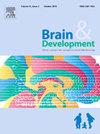Epilepsy as a multifaceted neurological disease: insights from a genetic study of novel gene variants
IF 1.3
4区 医学
Q4 CLINICAL NEUROLOGY
引用次数: 0
Abstract
Background
Epilepsy, a neurological disease characterized by recurrent seizures, is highly heterogeneous in nature. The objective is to demonstrate that epilepsy is a complex neurodisorder influenced by multiple gene mutations and to advance genetic therapies through the discovery of novel variants.
Methods
In our study, 89 people with epilepsy of unknown cause were examined using the Sophia DDM® data analysis platform. Pepper®, Sophia Genetics' proprietary foundation algorithm, was used for alignment and variation detection in accordance with the hg19 human genome reference.
Results
A total of 97 epilepsy-related gene variants were identified, which correlated well with the phenotypes. Eleven (13 %) pathogenic and likely pathogenic variants, including those in the DEPDC5, OPHN1, SHANK3, DYNC1H1, KCNQ1, ADGRV1, CHD2, GNB1, PDHX, and SCARB2 genes, were detected. 5 (6 %) of patients carried new variants. Two new variants in the ADGRV1 gene were c.14662-2A>G splicing heterozygous variants. The other two were in genes DEPDC5, c.2319_2320del (p.Cys774Leufs*2) frameshift heterozygous, and CHD2 c.1957del (p.Leu653Serfs*41) frameshift heterozygous variants. The last PDHX c.1159C>T (p.Gln387*) nonsense homozygous variant was confirmed by Sanger sequencing, and a family segregation study was performed and observed as heterozygous in the parents. It was not previously described in the literature and was defined as a new variant. The other 86 were detected as variants of uncertain significance (VUS).
Conclusions
We identified several novel and pathogenic variants across multiple genes associated with epilepsy, highlighting the genetic diversity and complexity of this condition. These findings underscore the importance of integrating genetic analysis into clinical practice for tailored interventions.
癫痫作为一个多方面的神经系统疾病:从新的基因变异的遗传研究的见解
背景:癫痫是一种以反复发作为特征的神经系统疾病,具有高度的异质性。目的是证明癫痫是一种受多种基因突变影响的复杂神经疾病,并通过发现新的变异来推进基因治疗。方法采用Sophia DDM®数据分析平台对89例不明原因癫痫患者进行分析。根据hg19人类基因组参考,使用Sophia Genetics的专有基础算法Pepper®进行比对和变异检测。结果共鉴定出97个与癫痫相关的基因变异,与表型有较好的相关性。检测到11种(13%)致病和可能致病的变异,包括DEPDC5、OPHN1、SHANK3、DYNC1H1、KCNQ1、ADGRV1、CHD2、GNB1、PDHX和SCARB2基因。5例(6%)患者携带新的变异。ADGRV1基因的两个新变体为c.14662-2A>;G剪接杂合变体。另外2个基因分别为DEPDC5、c.2319_2320del (p.Cys774Leufs*2)和CHD2 c.1957del (p.Leu653Serfs*41)移码杂合变异。最后一个PDHX c.1159C>T (p.Gln387*)无意义纯合变异体经Sanger测序确认,并进行家族分离研究,在亲本中发现为杂合。它以前没有在文献中描述过,被定义为一种新的变体。另外86个被检测为不确定显著性变异(VUS)。结论:我们在与癫痫相关的多个基因中发现了几种新的致病变异,突出了这种疾病的遗传多样性和复杂性。这些发现强调了将遗传分析整合到临床实践中进行针对性干预的重要性。
本文章由计算机程序翻译,如有差异,请以英文原文为准。
求助全文
约1分钟内获得全文
求助全文
来源期刊

Brain & Development
医学-临床神经学
CiteScore
3.60
自引率
0.00%
发文量
153
审稿时长
50 days
期刊介绍:
Brain and Development (ISSN 0387-7604) is the Official Journal of the Japanese Society of Child Neurology, and is aimed to promote clinical child neurology and developmental neuroscience.
The journal is devoted to publishing Review Articles, Full Length Original Papers, Case Reports and Letters to the Editor in the field of Child Neurology and related sciences. Proceedings of meetings, and professional announcements will be published at the Editor''s discretion. Letters concerning articles published in Brain and Development and other relevant issues are also welcome.
 求助内容:
求助内容: 应助结果提醒方式:
应助结果提醒方式:


